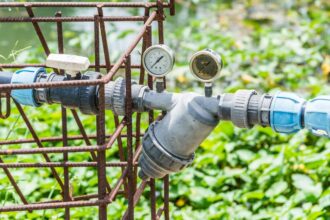Stormwater is rainwater that falls on hard surfaces such as rooftops, driveways, and roads, and it flows downhill and collects in stormwater drains, which then transports to nearby streams, rivers, or other water bodies. Stormwater drains play a crucial role in preventing flooding and erosion, as well as in protecting water quality in our communities. However, maintaining and cleaning stormwater drains can be a complex and challenging task, and many people may wonder who is responsible for them.
In general, the responsibility for stormwater drains falls under the jurisdiction of local councils. This entity is typically responsible for the planning, construction, maintenance, and operation of stormwater infrastructure within their boundaries. Local councils may also have stormwater management programs in place to help mitigate the negative impacts of stormwater on the environment and public health.
Check with Local Councils
Local councils are responsible for ensuring that stormwater infrastructure is designed and constructed to meet local and federal regulations. This includes ensuring that stormwater drains are installed properly and are appropriately sized to handle the expected volume of water. Additionally, local councils may require property owners to install stormwater management practices, such as rain gardens or green roofs, to help reduce the volume of stormwater runoff.
In some cases, responsibility for stormwater drains may fall under the jurisdiction of other entities. For example, in areas with large industrial facilities or military installations, the responsibility for stormwater management may be shared between the local council and the facility or installation owner. In these cases, the facility owner may be responsible for constructing and maintaining stormwater infrastructure on their property, while the local council is responsible for managing stormwater infrastructure in public areas.
Another important consideration when it comes to stormwater drains is the issue of private property. While local councils may be responsible for managing stormwater infrastructure in public areas, property owners are typically responsible for managing stormwater on their own property. This includes maintaining their own stormwater drainage systems, such as gutters and downspouts, and ensuring that their property is not contributing excessive amounts of stormwater runoff to the public system.
Work with Local Councils
However, in some cases, private property owners may need to work with local councils to manage stormwater on their property. For example, if a property owner is experiencing flooding or erosion due to inadequate stormwater infrastructure in the public system, they may need to work with the local councils to find a solution. Additionally, local councils may offer incentives or assistance programs to help property owners implement stormwater management practices on their property.
In addition to local councils and property owners, other entities may also have a role to play in managing stormwater drains. For example, utility companies may be responsible for managing stormwater infrastructure that is associated with their services, such as water mains or sewer lines. Additionally, state or federal agencies may be responsible for regulating stormwater management practices to ensure compliance with environmental regulations.
See Who Is Responsible For Your Stormwater
Responsibility for stormwater drains is a complex issue that involves multiple entities. While local councils are typically the primary entity responsible for managing stormwater infrastructure, property owners and other entities may also have a role to play. It is important for all stakeholders to work together to ensure that the stormwater drainage system is properly designed, constructed, and maintained to protect public health and the environment. This may involve implementing stormwater management practices on private property, coordinating with other entities, and complying with local and federal regulations.














